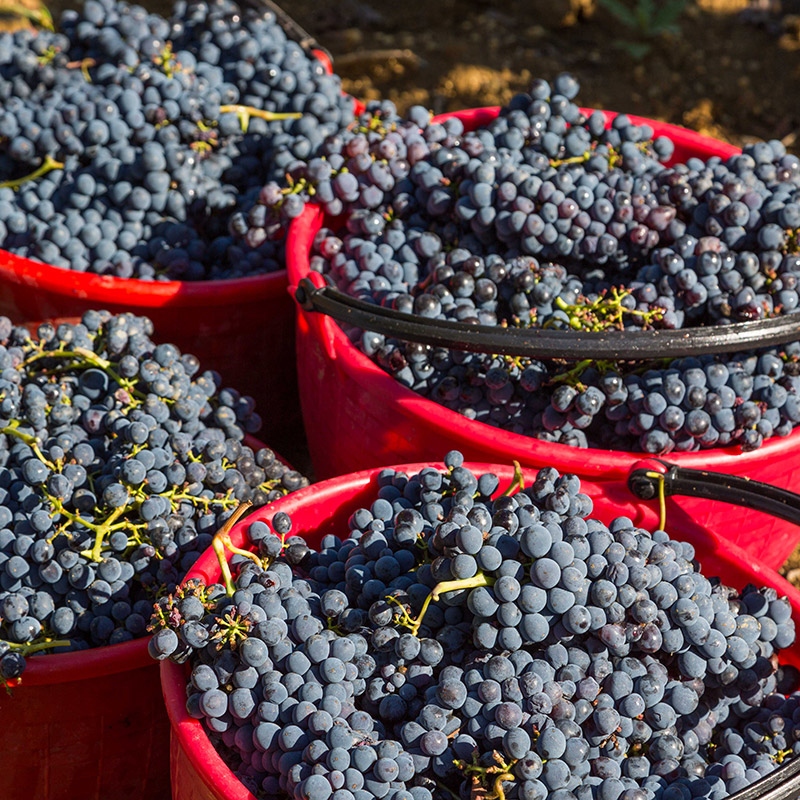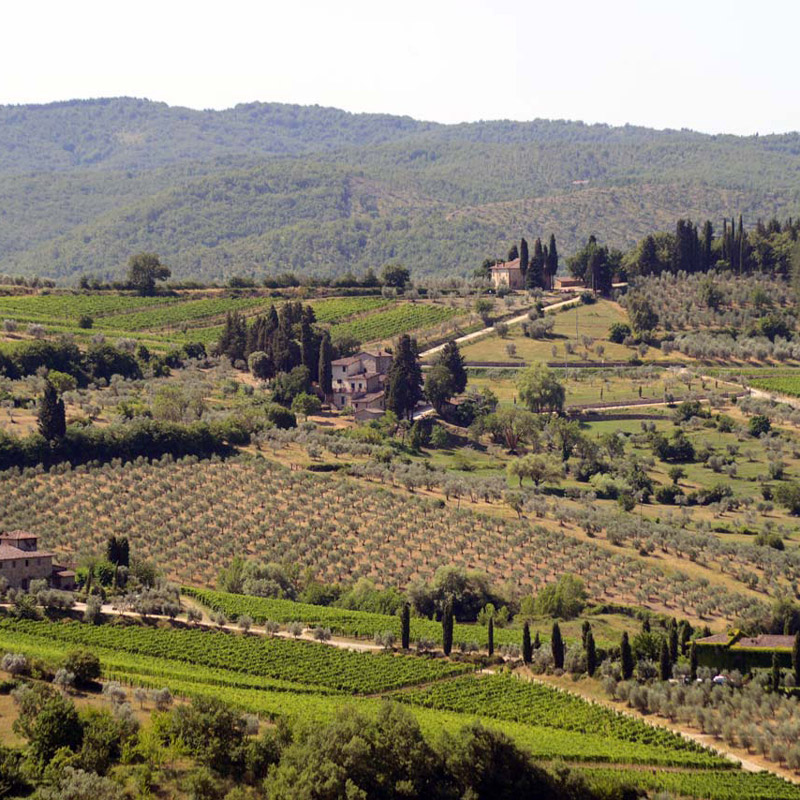"In Montalcino, the average temperatures have risen by 1 to 1.5° C since 2000, and the hottest zones in the south suffer the most from this," explains Giacomo Bartolommei from the Caprili winery and vice president of the Brunello consortium. For him, water is currently the most important problem in viticulture: "Montalcino is not particularly rich in water, and the resources available are mostly thermal water, which is very warm at 27 to 28° C. We are therefore concentrating on emergency irrigation. We therefore concentrate on emergency irrigation, which is only used when the vine is under stress. Studies have shown that by introducing the mineral zeolite in winter, the soils store more rainwater and stay fresher."
But replacing Sangiovese with grape varieties that can better withstand heat and drought stress because of climate change is not up for discussion in either the Chianti area or Montalcino. "Sangiovese is the grape variety of our growing region. It has evolved in it and united with it over the centuries," explains Giovanni Manetti of the Fontodi winery and president of the Chianti Classico Consortium. "We have deliberately increased its share from 80 to 90 per cent for the new subzones of the Gran Selezione and prohibited the use of international varieties. In this way, we want to enhance the autochthonous varieties, because there is a reason why they have been cultivated here for centuries: They are more adaptable and more in tune with the climate, the soil and the territory. In my opinion, they represent a great resource for our future."
We want to valorise the autochthonous varieties, because there is a reason why they have been grown here for centuries.
Giovanni Manetti,
President of the Chianti Classico Consortium
Giacomo Bartolommei also categorically rules out the possibility that demands for the approval of other grape varieties for Brunello could flare up again because of climate change: "The quality of the wines has improved remarkably since 2008, and the vintners' knowledge of how to handle Sangiovese has grown considerably. I am therefore convinced that today all producers are loyal to Sangiovese."
Bartolommei, however, explicitly does not rule out the possibility of using science to better adapt the traditional variety to environmental influences and thus ensure its survival. Nevertheless, he is sceptical about climate-resistant Sangiovese clones: "What I have tasted so far from the experimental plants with white international grape varieties, Cabernet Sauvignon and Merlot cannot compete with our wines today. Research is still in its infancy, and I'm not aware of any studies on Sangiovese." So there is still a long way to go - and that also applies to the rootstock vines with improved nutrient uptake developed by the University of Milan. "Their production is so low that we have not yet been able to procure any ourselves."

Bartolommei therefore believes that special agronomic techniques are more promising. For example, they refrain from early defoliation of the grape zone and thus protect the fruit from too much sunlight. "Recently, we have been focusing on reducing the 'green harvest'. We cut away only a few green grapes in June or July," Bartolommei explains further. "In this way, we achieve solid grape growth over the summer, which we only selectively decimate at the end of August. This way, only the best grapes reach full ripeness by the time the grapes are harvested."
The situation is quite different for Chianti Classico: "Despite a noticeable slight warming, we have felt little of the climate change so far," says consortium president Giovanni Manetti. "Our growing area is comparatively high in altitude. In addition, 65 percent is covered with forest, which influences the microclimate considerably. It is fresher on average and brings cooling, especially at night. In addition, the forest can store water better. It thus benefits soil moisture and serves as a water reservoir for the surrounding agricultural producers." Here, too, the winegrowers do not defoliate immediately, so that the grapes are shadier and fresher. In addition, the vineyards are now planted with vegetation almost everywhere. This limits evaporation and serves to preserve soil moisture. According to Giovanni Manetti, these adjustments have a "demonstrably positive" effect.

The fact that the stronger growth could lead to more powdery or downy mildew does not worry the winegrowers at the moment. "We have them pretty well under control," Manetti explains. This is also evidenced by the strong growth of organic farming: "More than 52 percent of Chianti Classico vineyards are now certified organic, which is one of the highest percentages among the major growing regions in Italy." This proves that the winegrowers can also successfully combat the dreaded fungal diseases with organic farming methods. Vintners are now aware, he said, that organically or sustainably farmed vineyards are better able to cope with current adversities than conventional farming - such as fungal diseases, insect infestations or the effects of climate change. "We are convinced that this is the path to follow - towards vineyards with ever greater respect for nature."
In Montalcino, on the other hand, wineries are currently following a middle path between conventional and organic farming. "But there are many organic farms, and all the vineyards are farmed sustainably," Bartolommei knows. "For example, we can reduce mechanical work in the vineyard to a minimum so that the vines can adapt to the given conditions as undisturbed as possible. We have understood that the environmentally conscious way of farming with fewer external influences is helpful. But the situation changes considerably from year to year: with climate change, there is simply no linear development to follow. Only if you experience your vines day by day in the vineyard can you preserve them and accompany them to a 'normal' harvest."
Markus Blaser works as a freelance journalist and historian in Florence. The Swiss wrote for "Merum" until 2016 and publishes on the economic, political, cultural and historical background of wine and olive oil in Italy.